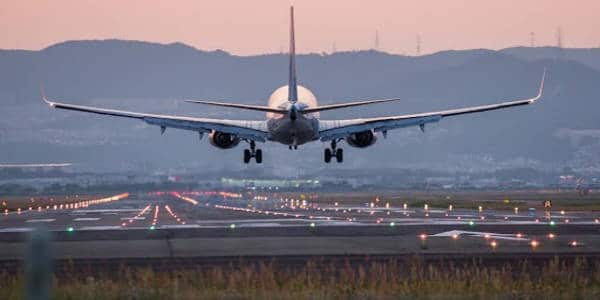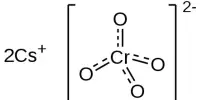Although carbon-neutral aviation is possible, aircraft will most likely continue to be powered by fossil fuels in the future. The CO2 they emit must be stored underground in a systematic manner. This is the most cost-effective of the various approaches that researchers thoroughly compared.
It is politically agreed and necessary for climate protection reasons that our entire economy become climate-neutral over the next few decades – and this includes air travel. This is a technically feasible goal with numerous options for achieving it.
ETH Professor Marco Mazzotti and his colleagues have now compared and evaluated the options that appear to be the simplest to implement in the short and medium-term, taking into account factors such as cost-effectiveness. The ETH researchers conclude that the best option is to continue using fossil fuels to power aircraft in the future but to remove the associated CO2 emissions from the atmosphere using CO2 capture plants and to store that CO2 permanently underground (carbon capture and storage, CCS).
“The necessary technology already exists, and underground storage facilities have been operating for years in the North Sea and elsewhere,” says Viola Becattini, the study’s first author and a postdoc in Mazzotti’s group.
“If, for example, a carbon tax or a cap-and-trade system were imposed on emissions from fossil jet fuels, or if governments provided financial incentives for deploying CCS technologies and achieving climate goals,” says ETH professor Mazzotti.
Carbon-neutral aviation is possible, but in the future, aircraft are likely to continue to be powered by fossil fuels. The CO2 they emit must be systematically stored underground. This is the most economical of various approaches researchers have compared in detail.
Directly or indirectly from the air
There are basically two ways to capture CO2: directly from the air or indirectly at a site where organic material is burned, such as a waste incineration plant. “Roughly half of the carbon in municipal waste burned in incinerators comes from fossil sources, such as plastic made from petroleum. The remaining half is made up of organic materials such as wood or wood products such as paper and cardboard “Mazzotti explains.
Capturing and storing the share of carbon that has a fossil origin is a zero-sum game in terms of climate action: it simply sends carbon that originated underground back to where it came from. In terms of organic carbon, this was originally absorbed from the air as CO2 by plants, so capturing and storing this carbon is an indirect way of removing CO2 from the atmosphere. This means that CCS is a viable method for re-burying carbon from fossil aviation fuels, effectively making air travel carbon-neutral.
The ETH researchers demonstrated in their study that indirect carbon capture from waste incineration gases is significantly less expensive than direct carbon capture from the air, which is also technically feasible.

Synthetic fuels more expensive
In addition, the researchers looked into producing synthetic aviation fuel from CO2 captured directly or indirectly from the air (carbon capture and utilization, CCU). Because the chemical synthesis of fuel from CO2 is energy-intensive and thus costly, this approach is in any case less cost-effective than using fossil fuels and CCS. CCU is roughly three times more expensive than CCS, regardless of whether the CO2 is captured directly or indirectly.
ETH Professor Mazzotti also points out one of CCU’s pitfalls: depending on the energy source, this approach may even be counterproductive from a climate action perspective, namely if the electricity used to produce the fuel is from fossil fuel-fired power plants.
“With Switzerland’s current electricity mix or France’s, which has a high proportion of nuclear power, energy-intensive CCU is already more harmful to the climate than the status quo with fossil aviation fuels – and even more so with the EU’s average electricity mix, which has a higher proportion of fossil fuel-fired power plants,” Mazzotti says. CCU would only make sense from a climate action standpoint if virtually all of the electricity used came from carbon-neutral sources.
More profitable over time
“Despite this limitation and the fundamentally high cost of CCU, it may make sense in some parts of the world. For example, if a large amount of renewable electricity is generated but no suitable CO2 storage sites exist, “Becattini explains.
The ETH researchers calculated the costs of various carbon-neutral aviation options not only today but also in the future, up to 2050. They anticipate that CCS and CCU technologies will become less expensive as technology advances and economies of scale take effect. Carbon taxes are likely to raise the price of CO2 emissions. As a result of these two developments, the researchers anticipate that CCS and CCU will become more profitable over time.
Infrastructure required
The researchers emphasize that there are other ways to achieve carbon-neutral air travel. For example, much research is being conducted into aircraft that run on either electricity or hydrogen. According to Mazzotti, while these efforts should be taken seriously, both approaches have drawbacks. For one thing, due to the weight of their batteries, electrically powered aircraft are unlikely to be suitable for long-distance flights. Before hydrogen can be used as a fuel, both the aircraft and their supply infrastructure must be completely designed and built from the ground up. Because these approaches are still in the early stages of development, with many questions remaining, the ETH scientists did not include them in their analysis, instead of focusing on drop-in liquid fuels.
However, the researchers emphasize that CCS, like any other technology, necessitates infrastructure. The locations where CO2 can be efficiently captured and stored may be far apart, necessitating CO2 transportation infrastructure. In the coming years, science, industry, and politics will have to work hard to plan and build this infrastructure, not only for CO2 emissions from aviation but also for emissions from other carbon-intensive industries like chemicals and cement.
















